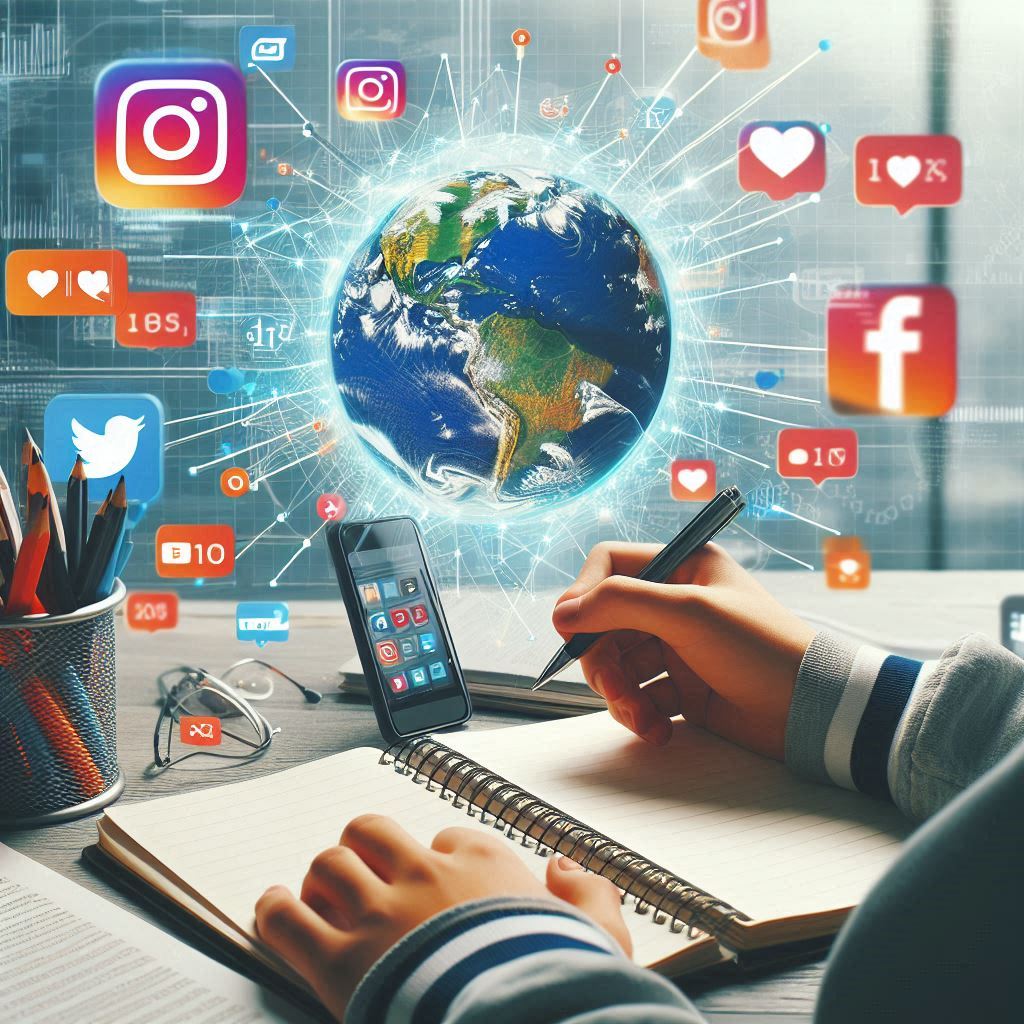THE IMPACT OF SOCIAL MEDIA ON STUDENT LIFE
In today’s digital age, social media has become an indispensable part of daily existence particularly among young people. Instagram, Twitter, Facebook and TikTok are some of the platforms that provide novel opportunities for interaction, sharing and involvement in global issues. Even so, there are multifaceted aspects of social media on student life that involve both beneficial and detrimental effects. This paper explores how students have been affected by social media as well as providing tips to make better use of it.
The Positive Impacts of Social Media on Students

1. Enhanced Communication and Networking
Social media enables communication and networking. This helps students to remain linked with their fellow students, teachers as well as experts. Through team chats and forums, a platform is created for collaborative learning purposes, resource sharing and also event organizing. On platforms like LinkedIn, college students get the chance to network with professionals in their area of specialization as well as explore job avenues.
2. Access to Educational
Resources
The worldwide web is an endless mine of educational resources. Social media platforms usually have educational content, for instance online courses, videos and articles with education themes. Learners can follow educational pages, join academic groups and take part in webinars to make their learning more meaningful. This information democratization can enhance traditional education as well as bring in a range of perspectives.

3. Support and Community Building
A sense of community and emotional support can derive from social media. Students are at liberty to choose groups that they relate with, either academically or personally. Such communities allow individuals to share their experiences, seek guidance, and feel united in challenges. Stress or anxiety could be managed by these mental health awareness groups which students opt for as a source of information and help.

4. Opportunities for Creativity and Self-Expression
Platforms like Instagram, TikTok and YouTube allow students to express themselves creatively and showcase their talents. From art and music to writing and photography, social media allows students to gain recognition and build their own brand. This creative process can boost confidence and give you a sense of accomplishment.
The Negative Impacts of Social Media on Students
1. Distraction and Reduced Academic Performance
One important concern with social media is its potential to distract students from their studies. Endless scrolling, obsessive processing of information and updates can lead to procrastination and reduced concentration on academic tasks. This distraction can negatively affect academic performance and time management skills.
2. Mental Health Issues
The pressure to maintain a perfect online identity and constant comparisons with peers can cause stress, anxiety and depression. Studies have linked excessive use of social media with low self-esteem and body image issues. Seeking acknowledgment through likes and comments can also exacerbate mental health challenges.
3. Cyberbullying and Online Harassment

Social media platforms can be a breeding ground for cyberbullying and cyberbullying. The anonymity of the Internet can embolden individuals to engage in harmful behavior. Students who are victims of cyberbullying can experience emotional distress, which can affect both their academic performance and well-being.
4. Privacy Concerns
Sharing personal information on social media can raise privacy concerns. Students can inadvertently expose themselves to risks such as identity theft, online fraud, or unwanted attention. Understanding and maintaining privacy policies is essential to protecting your information and ensuring online safety.

Strategies for Managing Social Media Use
1.Set Boundaries and Prioritize Time Management
Setting clear boundaries for social media use can help minimize distractions. Set specific times for social media and make sure it doesn’t interfere with study time or sleep. Using techniques like productivity apps and the Pomodoro technique can help you manage time more effectively.

2. Cultivate a Positive Online Presence
Be mindful of the content you share and the connections you make online. Building a good network involves sharing meaningful information, being respectful, and avoiding miscommunication. Remember that social media is a reflection of your personal brand.
3. Seek Support and Report Issues
If you are experiencing cyberbullying or online bullying, seek help from trusted individuals or organizations. Most social media platforms have reporting tools and support systems for dealing with issues of harassment and abuse. Don’t hesitate to report inappropriate behavior and ask for help when needed.

4. Focus on Balance and Self-Care
Balance social media activity with offline activity and self-care practices. Indulge in hobbies, exercise, and spend real time with friends and family. Striking the right balance between online and offline life is important for both well-being and academic success.

Social media has a huge impact on students’ lives, providing both opportunities and challenges. While it provides a valuable way to communicate, learn, and express oneself, it also poses risks such as distraction, mental illness, and privacy By using effective strategies though overcome the use of social media, students can utilize its advantages while minimizing its drawbacks . By navigating the digital landscape with mindfulness and balance, students can thrive academically and personally in the modern world.
- Total visitors : 9,980
- Total page views: 15,928
